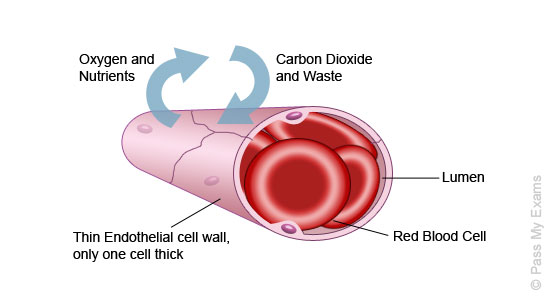Capillaries
Capillaries are very narrow thin blood vessels. Arteries branch out many times to form capillaries, these capillaries then join up to form veins. Capillaries carry blood to and from the body’s cells. Capillaries are the site at which exchange of oxygen, carbon dioxide and nutrients takes place. The structure of capillaries makes them very well suited for this function. As capillaries are only one cell thick and have very thin permeable walls this means that substances can diffuse out of them very easily. Fluid leaks out of the capillaries and bathes the surrounding cells, this is called tissue fluid. Useful substances such as oxygen and food diffuse out of the blood in the capillaries into the tissue fluid where it is then taken to the cells. Waste products such as carbon dioxide diffuse from the body’s cells, into the tissue fluid and are reabsorbed back into blood in the capillaries.
Cross section of a Capillary

